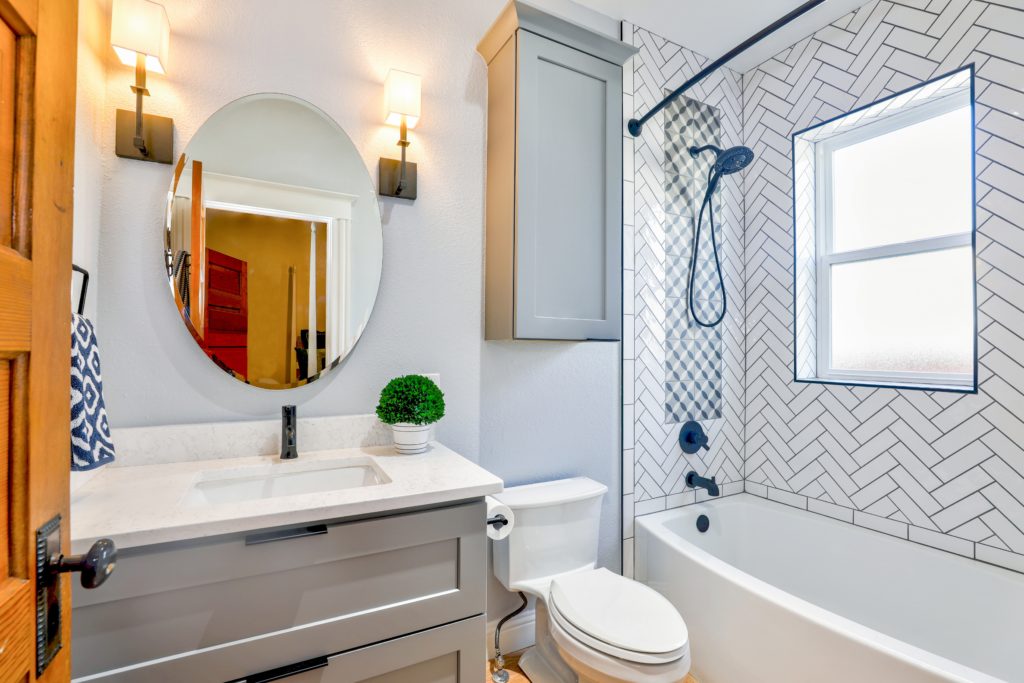Every property’s bathroom is prone to mold and mildew as the area’s nature is usually moist. Hence, it’s essential to boost your comfort room’s structure with watertight utilities to prevent these issues from ever penetrating and damaging your toilet spaces.
In this blog article, you will discover the importance of turning simple comfort rooms into watertight bathrooms. More importantly, you’ll learn some fundamental tips to achieve a waterproof toilet space in your establishment.
Introducing watertight bathrooms
A watertight bathroom is vital to any home, as it protects the underlying structure from water damage and ensures a stable and hygienic bathroom environment. Water damage can cause costly repairs and even health hazards such as mold growth, so taking the necessary steps to prevent it is crucial.
Below are several benefits to having a watertight bathroom, including the following:
- Protection from water damage: A watertight bathroom prevents water from seeping through the floors, walls, and fixtures, preventing water damage to the underlying structure of your home. It can save you from expensive damage repairs and ensure the longevity of your bathroom.
- Improved hygiene: A watertight bathroom prevents moisture from accumulating, reducing the risk of mold and mildew growth. These harmful substances can cause health problems and unpleasant odors, making maintaining a dry and hygienic bathroom environment necessary.
- Increased property value: A watertight, well-maintained bathroom adds value to your home. Aim to put your property on the market. A functional and hygienic bathroom can make a positive impression on potential buyers and increase the overall value of your home.
- Ease of maintenance: A watertight bathroom is easy to maintain, reducing the risk of water damage, mold, and mildew growth. It makes it easier to keep your bathroom clean, dry, and hygienic, reducing the need for frequent repairs and maintenance.
Now that you know the advantages it can bring to your structure. Here are the five tips you can follow to achieve a waterproof bathroom successfully:
1. Use Appropriate Waterproofing Materials
Using appropriate waterproofing materials is crucial in accomplishing a watertight bathroom. Selecting waterproof membranes, sealants, and water-resistant grout is essential to prevent water from seeping through the shower enclosure, bathtub, and plumbing fixtures. Owners or contractors can use waterproof boards or cement boards for the walls to prevent water from penetrating the substrate.
2. Properly Install the Shower Enclosure and Tray
The shower enclosure and tray are critical components of the bathroom that require proper installation. Hence, installing it using waterproof membranes, sealants, and water-resistant grout is vital. Moreover, the shower tray should be installed and sloped towards the drain to prevent standing water.
It’s also essential for you to ensure the proper sealing of the shower door. One way to guarantee it is to fill the spaces between the door and the enclosure with adequate sealant. These steps will prevent water from seeping through the shower enclosure and causing water damage to the underlying structure.
3. Seal the Bathtub
The bathtub is another critical component of the bathroom that requires proper sealing. The gaps between the bathtub and the wall require correct sealing to prevent water from permeating. In addition, the sealant to fill the gap should be water and mold-resistant.
It’s also necessary to ensure the bathtub is adequately sloped towards the drain to prevent standing water. Proper sealing and sloping can prevent water damage and keep the bathroom dry and hygienic.
4.Tighten Plumbing Fixtures
You can hire an expert plumber to correctly install and tightly seal your plumbing fixtures, such as faucets, showerheads, and valves. Property owners must ensure the accurate installation of the plumbing fixtures, following the manufacturer’s instructions. Loose plumbing fixtures can cause water leaks, leading to water damage and mold growth.
Furthermore, you must consider concealing your plumbing facilities with an Acudor Stainless Steel Air and Watertight Access Panel to enjoy superb air infiltration and water penetration protection. It will help avoid water leaks and ensure that the bathroom stays watertight.
5. Adequate Ventilation
Adequate ventilation is crucial to maintain a dry and hygienic bathroom environment—moisture build results in mold and mildew growth, leading to unpleasant odors and health hazards.
Installing an exhaust fan can help remove excess moisture and prevent mold growth. Keeping the bathroom door open and allowing natural ventilation is also critical. By providing adequate ventilation, the bathroom can remain dry and hygienic.
Watertight Bathroom: A Secret To Long-Lasting Structure
Creating a watertight bathroom prevents water damage and ensures a hygienic bathroom environment. Using the waterproofing materials, properly installing the shower enclosure and tray, sealing the bathtub, tightening plumbing fixtures, and ensuring adequate ventilation are critical steps to creating a watertight bathroom. Following these tips, you can guarantee your bathroom remains dry and hygienic, providing a comfortable and functional space for years.

